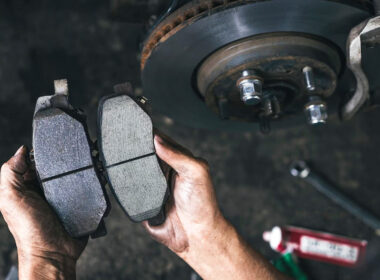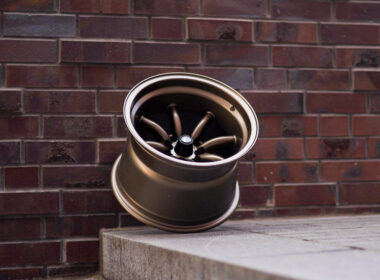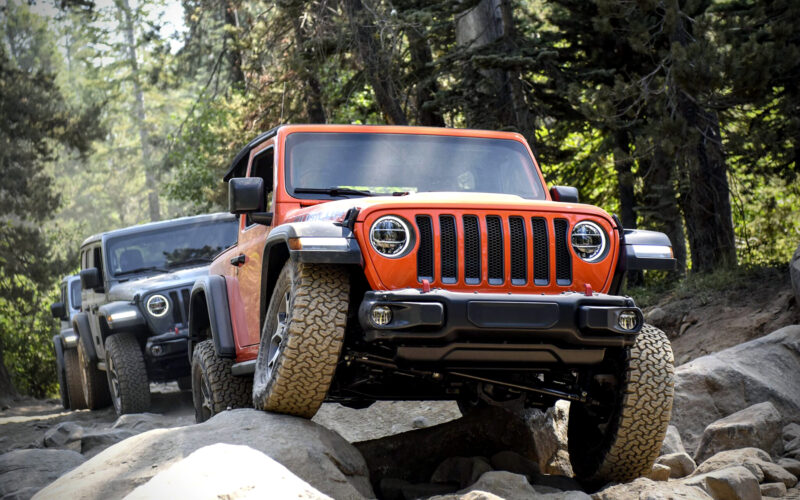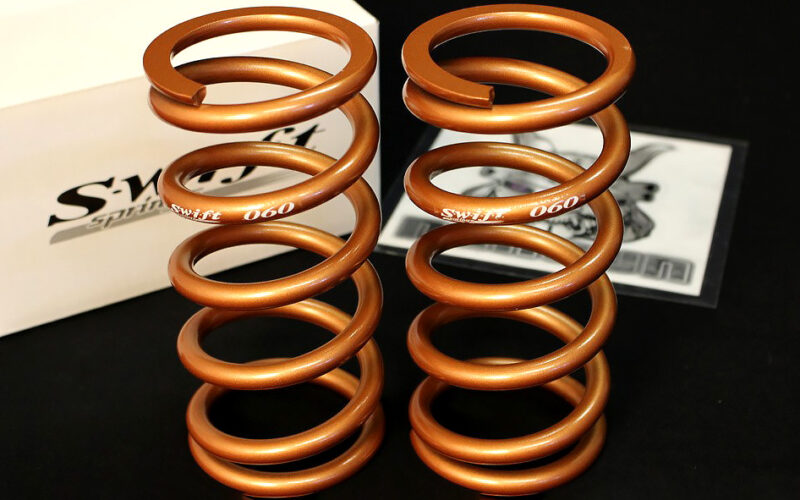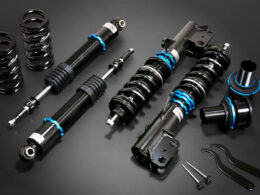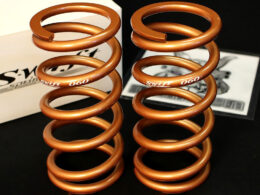Enthusiast or not, if you own an SUV, there’s a good chance you care about ground clearance. It’s something that directly affects your driving technique, and is definitely worth considering if you’re getting into overlanding.
Even if you’re someone who prefers cars to trucks, ground clearance is not something you want to ignore; it’s the Achilles’ heel of lowered cars for a reason.
People who drive one will often tell you how they’re constantly worried about underbody damage and how their cars have to be babied when driving over speed bumps.
Regardless of your preferred driving environment, knowing the limitations of your vehicle’s ground clearance will help you decide whether or not you should lift or lower it, and whether you need rock sliders, bash plates, or other forms of undercarriage armor.
In this article, we’ll explain what ground clearance (GC) is, why it’s important, and how to measure it.
Ground Clearance Explained

Ground clearance is the distance between the ground and the lowest part of your vehicle’s undercarriage; excluding the tires, wheel hubs, brake plates, and mudflaps.
Depending on the design of your car’s undercarriage, the lowest points can vary. It could be the axle, the differential, the rocker panel, the exhaust, or the suspension arms.
The general idea behind knowing a vehicle’s ground clearance is to figure out how big an object it can drive over. For example, if your truck has a ground clearance of 9.4″, you should be able to drive over a rock that’s 9.4″ tall. But it’s a little more complicated than that.
Ground clearance alone won’t give you much of an insight into your truck’s off-road capabilities. It is only useful for clearing obstacles that have a high center-crest, like a boulder, a speed bump, or a log of wood placed horizontally.
But when it comes to clearing deeply rutted tracks, ridges, rock gardens, and steep slopes, you also need to consider other measurements such as:
- Axle, suspension, and running clearance
- Breakover, departure, and approach angles
Knowing these measurements will give you a far more accurate representation of the kind of terrain your truck can handle, in comparison to GC alone.
Axle Celarance
Axle clearance refers to the vertical distance measured from the lowest point on the axle differential to the ground, assuming it’s perfectly level and free of undulations.
This usually only applies to solid axle suspension setups because the differential is part of the axle. So for instance, if you wanted to know the axle clearance on a Jeep Rubicon, you’d have to measure from the lowest point on the differential to the ground.
With independent suspension systems, the differential unit is not part of the axle. Rather, it’s attached to the chassis.
That’s why “differential clearance” or “diff clearance” is often the preferred coloquial term because it’s a lot simpler to understand. However, it’s not used by manufacturers.
Suspension Clearance
Suspension clearance is simply the lowest distance measured from the front and rear suspension components to the ground.
With many independent suspension trucks, it’s the lower control arms that happen to be the lowest hanging component. That’s why it’s usually lower than ground or axle clearance. The only way to increase suspension clearance is by installing larger diameter tires.
Running Clearance
Running clearance refers to the distance from the ground to the lowest point of an unladen truck’s undercarriage, excluding the unspring weight. The key words being “unladen” and “unsprung weight”.
Unladen, in this context, indicates that the measurement takes the vehicle’s kerb weight into account. This means it’s measured without any fluids, passengers, accessories, or payload.
Unsprung components typically include wheels, tires, braking system, suspension components, hub motors, solid drive axles, the differential, and pretty much anything connected directly to the wheels.
It’s important to note that with independent suspensions, the differential is not a part of the unsprung mass because it’s connected to the chassis.
The list of unsprung and sprung components varies for different types of suspension setups, however, that’s another topic for another day.
What you need to know now is that if your car or truck has an independent suspension on the front and the back, then your manufacturer specified running clearance won’t include the differential, unless stated otherwise.
Approach and Departure Angle

Have you ever brushed your front bumper when approaching an angled ramp or when exiting one at speed? That’s what happens when you’re low on approach angle.
If you think of driving onto a steep ramp, at some point, the ramp is going to be too steep for you to drive on to it without damaging your front end. The higher your approach angle, the less likely it is for that to happen.
With that in mind, the approach angle is the maximum upward angle that your vehicle can drive over without scraping the front end. Departure angle is the same as approach angle, but in reverse; it comes into play when you’re departing from an obstacle.
Approach angle matters when you’re approaching an obstacle, and breakover angle determines how big an obstacle you can drive over.
Breakover Angle

Breakover angle is very similar to ground clearance, but far more accurate when it comes to determining your vehicle’s capability to clear high center obstacles.
It takes all the major angles into account, which includes ground clearance, approach, and departure angle. In the diagram above, you’ll see two lines going from the center of both wheels, to the lowest point in the center of the truck. Let’s call these lines A and B.
From the point at which lines A and B meet, picture another line C parallel to the ground. The angle formed between either line A or B with line C is the breakover angle. The longer the vehicle, the lower the breakover or rampover angle is.
How To Measure Ground Clearance?
There’s no standard method of measuring ground clearance because it’s different for every vehicle. It depends on the suspension and chassis design.
You can use a tape-measure to check the distance from the lowest point of your car to the road surface. If you’re unsure what the lowest part of your undercarriage is, a cursory search will reveal it.

Usually it’s one of the differentials, rocker panels, exhaust, or the lower control arms, but technically that would be suspension clearance, not GC. With solid axle suspensions, it’s almost always the differential pumpkin because of how low and bulky it is.
Automakers do publish ground clearance figures, but you should measure them yourself anyway, because the claims aren’t always accurate.
When 4×4 owners read “clearance” specs published by the automaker, they naturally assume it’s ground clearance, when in fact it could be running clearance.
Many manufacturers quote running clearance instead of ground clearance, which if you’re serious about the off-road capability of your truck, you know how misleading it can be.
How Much Is too Much?
We all know what happens if ground clearance is too low, but if it’s too high, the truck will drive like a boat and lose stability, especially in corners.
In theory, you can increase ground clearance without affecting the center of gravity, but if you take the lift kit route to increase GC, you’ll definitely increase the center of gravity in the process, and also the roll couple as a result.
Roll couple is the vertical distance between the roll center and the center of gravity. The higher it is, the more body roll there is, and the more likely you are to roll over.
Altering Ground Clearance: Considerations

Whether you’re lowered or lifted, not having enough ground clearance is annoying and very expensive if things go wrong. If you’re lucky, you’ll only scrape the lowest hanging parts of your car without breaking any vital components.
But in the worst case scenario, you might damage your oil sump, steering components, or your transfer case, which might leave you stranded. The risks depend on what you drive, how you drive it, and quality of your local roads.
For instance, if the roads are perfect, you can get away with slamming your car, but if they’re not, then consider keeping your ride height as close to stock as possible. Either that, or you can go the extra mile and install air suspension — get the best of both worlds.
If you’re about that 4×4 life, which you probably are since you’re reading about ground clearance, then consider installing a lift kit if you absolutely need the extra approach, departure, and breakover angle.
However, if you own a truck and aren’t keen on taking it off-road, or if you use it exclusively for towing, then consider looking into leveling kits.
Body Lift vs. Suspension Lift

This is where things get really interesting, because the difference between ground clearance and ride height becomes clear once you understand what body lift and suspension lift means.
Note that we aren’t talking about body lift spacers, but rather the difference between the height of sprung mass and unsprung mass, relative to the ground.
Body lift indicates an increase in the height of sprung components without any change in your suspension’s travel range. For instance, if you install front strut spacers and rear lift blocks, basically a leveling kit, then what you get can be considered a body lift.
Suspension lift, on the other hand, not only raises the body but also extends the suspension travel. It indicates an increase in both the sprung mass and (some) unsprung mass, only when it comes to independent suspension systems.
Lift kits are the best example of this because they include parts which give you a body lift (spacers), as well as those which extend the suspension travel range (coilovers).
For vehicles with solid axles at the front and rear, ground clearance is not affected by adding either suspension lift or body lift. That’s because the differential, which is the lowest hanging component, is a part of the unsprung mass as it’s not attached to the frame.
As a result, no amount of added weight or suspension articulation will cause vertical displacement in unsprung mass. That’s why solid axles are still a thing, and after all these years, you still see this tech being used in modern 4x4s.
But in vehicles with independent suspensions at the front and rear, ground clearance is variable as the differential is connected to the chassis.
This means you will gain and lose clearance as your suspension articulates. In other words, large up-travel events will put your oily bits and sensitive components closer to the ground temporarily. The same applies to added weight.
You’re in the Clear
When it comes to modifying your truck for a specific driving style, it’s a matter of horses for courses. As long as you’re mindful and intentional about the changes you make to your suspension setup, you’ll get the right results.
You’re all set! Explore a wide range of leveling kits, lift kits, lowering springs, and coilovers for your vehicle here at Suspension Setups.
